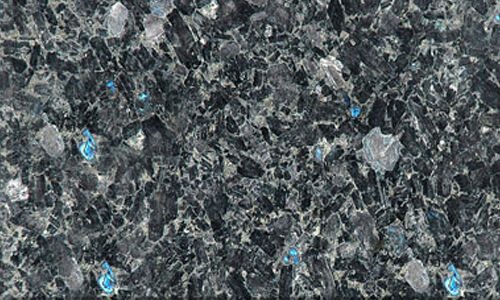Granite vs. Marble Countertops: Choosing the Perfect Stone for Your Home
Are you facing the challenge of choosing between granite and marble countertops for your kitchen or bathroom? Choosing between these stunning natural stones can be challenging, and many people need help to discern their differences beyond their aesthetic appeal. However, there are significant distinctions in terms of consistency, appearance, and lifespan that should inform your decision-making process. This comprehensive guide will explore the relationship between granite and marble, helping you make an informed choice that suits your needs and preferences.
Granite and Marble: Similarities
Before delving into the disparities between granite and marble, it’s essential to acknowledge the remarkable similarities that these two stones share. These similarities encompass their origin, weight, versatility, and resistance to various forms of damage.
1. Origin: Both granite and marble are sourced directly from nature and extracted from quarries worldwide. When you choose either of these stones for your countertops, you can be assured that they originate from reputable quarries. You’ll find abundant marble sources in the United States in states like Montana, Colorado, Vermont, Alabama, and Texas. Conversely, granite is even more abundant globally, constituting a significant portion of the Earth’s crust. Countries like Spain and Italy are renowned for their granite extraction and production.
2. Weight: In terms of weight, granite and marble are similar, weighing approximately nineteen pounds per square foot. These stones are initially harvested as hefty slabs and are later cut to the required dimensions for countertops and architectural use. Due to their weight, the installation of granite or marble countertops necessitates the expertise of professionals.
3. Versatility:
Granite and marble are highly versatile stones, suitable for various applications. They can be used for countertops, decorative elements, and as essential components in architectural and interior design. Both stones typically exhibit opaque coloring and are available in various colors, patterns, sizes, and shapes. Their versatility allows them to grace luxurious resorts, adorn monuments worldwide, and enhance the aesthetic appeal of homes. Choosing either marble or granite for your countertops ensures you have a durable and adaptable material that can serve as the focal point of your living spaces.
4. Resistance: One of the most notable similarities between granite and marble is their resistance to damage and wear. Stones naturally resist water, scratches, gouges, and common household stains. It’s worth noting that neither granite nor marble should be exposed to acidic substances that can potentially erode their surfaces. However, for everyday kitchen use, where exposure to such acids is limited, granite and marble countertops provide a dependable and long-lasting option.
Granite and Marble: Differences
While granite and marble share several similarities, they exhibit crucial differences in formation, appearance, and durability. These differences often serve as the primary factors influencing the choice between the two for countertop applications.
1. Aesthetics & Formation: The most noticeable disparity between granite and marble is their appearance, significantly impacting decision-making. Marble is a metamorphic rock formed under high pressure and heat deep within the Earth. Marbles’ patterns and colors come from mineral deposits like silt, clay, iron, or chert. In contrast, granite is an igneous rock solidified from lava. Due to their distinct formation processes, marble exhibits prominent swirls and streaks, while granite features colorful dots and geometric patterns.
2. Porosity: One of the critical distinctions between these two stones is their porosity. Marble is very porous, quickly absorbing moisture and liquids from the surrounding environment. Its softness makes it an ideal material for sculpting, a characteristic that has led to the creation of many famous sculptures from marble. However, marble requires professional sealing to preserve its color, appearance, and durability due to its porous nature. Sealed marble becomes less susceptible to staining and scratching. While also porous, granite has a significantly lower porosity level than marble. It, too, requires sealing to enhance resistance against scratching and staining.
3. Function: Granite is often perceived as the more durable option between the two stones due to its lower porosity. Granite’s crystalline structure, essentially formed from crystallized and hardened magma, contributes to its superior durability. Granite is inherently harder and more robust than many other natural stones, making it ideal for applications where durability and resistance are paramount. While granite and marble can withstand abrasions and natural weathering to some extent, granite typically boasts a longer lifespan in terms of durability.
Granite vs. Marble: Conclusion
After examining the similarities and differences between granite and marble, It’s essential to make a decision that meets your unique needs and preferences. For many homeowners, aesthetics often play a pivotal role in their choice of countertop material. The decision may revolve around which stone complements the chosen style and materials for kitchen cabinets, flooring, and other elements. While aesthetics are undoubtedly essential, it’s equally crucial to consider functionality and durability when selecting your countertop material.
Granite and quartz countertops, for instance, are renowned for their exceptional durability and functionality, making them excellent choices for practical, high-traffic areas like kitchens. To ensure you make the best decision for your home, consult with your contractor or contact professionals at a local granite and natural stone company. They possess the expertise to guide you toward the most suitable stone based on your specific needs as a homeowner and designer.
Final Thoughts
Marble and granite are undeniably exquisite natural stones, each capable of adding unparalleled beauty to your home. While they share surprising similarities, such as their biological origins and versatility, their differences are equally worth considering. Marble and granite are distinct types of rocks formed through entirely different geological processes, resulting in variations in patterns and colors. Marble, with its high porosity and softness, requires sealing for enhanced durability, while granite, due to its crystalline structure, offers superior resilience.
At International Granite and Stone, we profoundly appreciate the beauty and diversity of marble and granite. We are passionate about assisting homeowners in making the right choice for their unique needs. We invite you to start a conversation with us today or visit our showrooms to explore our extensive and stunning marble and granite selections. Find the ideal natural stone to enhance your living spaces’ beauty and functionality.

